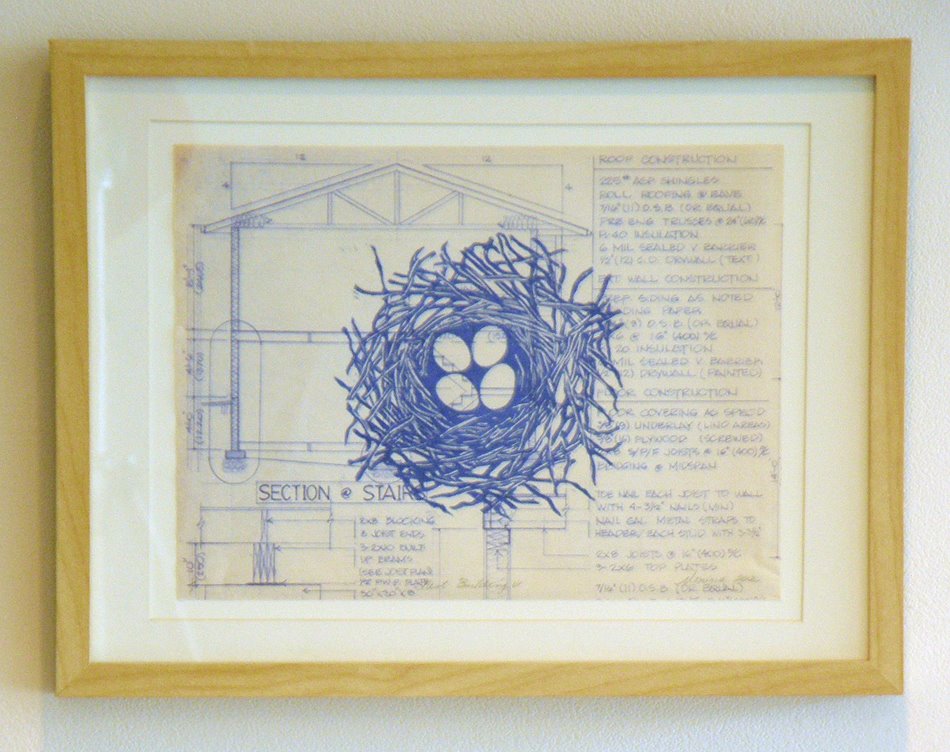Submitted by: Sydney Luther, Gallery Assistant
There are two main types of artist statements: the project statement and the bio statement.
The bio statement is a piece of writing that is a mini biography of an artist, which may be essential when applying for grants or gallery exhibitions. This type should generally be no longer than one page.
The project statement is a short piece which accompanies a piece of art. An artist statement of this kind can add much to the presentation of one’s artwork in a gallery show.
 |
“Nest Building VI” 2012, Ink on Blueprint
Monique Martin
From the Exhibition “Nest – Nest Egg – Empty Nest“
A multi-media exhibition focusing on the nest and its symbolic meanings: The nest egg as a symbol of financial largesse, the nest as a home as a place to raise children, and empty nest as the moving away of grown children is explored through the exhibition. |
As a non-artist, I always read project statements to gain some understanding into what an artist was thinking when they created their piece. I also like to learn about how the piece was made, and this is something that’s even more important when you’ve made a piece of fine craft that may feature an uncommon technique. It should be noted that most craft techniques are new and different to a public who knows little about craft or the artistic process.
For any type of artist statement, the groundwork to a written piece is grammar. The way you write always prefaces what you write. Don’t write the way you speak. Instead, be sure to use complete sentences. The galleries to which you are submitting your project statement should have a staff member edit your writing if it is going to published or displayed, but you should remember that whoever is editing your writing is aware of who you are and is analyzing the mistakes you’ve made.
MollyGordon suggests you use the present tense (“I am,” not “I was”; “I do,” not “I did”) when writing an artist statement. She also says an artist statement should be written in the first person, so refer to yourself with the pronouns “I,” “me,” and “my.” Art Business suggests the use of simple everyday words, and emphasizes that a project statement is a piece of writing meant for the public and not simply for other artists. Explain technical terms or avoid them altogether. CARFAC emphasizes the importance of revision when writing. Do not expect to have a perfect piece of writing on your first try! All the best writers edit, edit, edit. In an article on writing for visual artists, CARFAC also points out that we cannot always reply on spell check, because computers cannot catch every mistake.
It’s important to slow down and to take some time to write your statement. As much as you might hope your work will speak for itself — without consideration given to titles or artist statement — this is often not the case with the general public. In the case of project statements, the public, including potential buyers, are interested in what you thought while you created the piece. How you felt, what inspired you, and information about the technique are all important to include. However, you also want to ensure that your statement is short and sweet. At Affinity Gallery, most project statements fit onto one 2×3 inch label, so aim for one solid paragraph about your work.
How do you feel about artist statements? What makes a successful statement?
